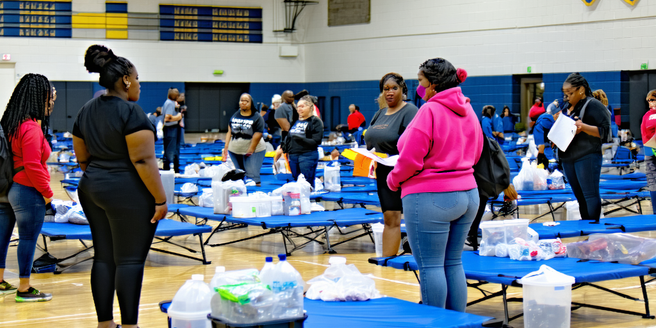
Understanding Hurricane Season and Its Impact
Hurricane season is a critical time of the year, particularly for those living in coastal areas. It runs typically from June to November, with peak activity observed between August and October. During this period, communities face increased threats of high winds, heavy rainfall, and flooding, which can lead to power outages and limited access to essential services. Understanding the patterns and the enhanced risks helps residents prepare efficiently, minimizing the impact on daily life. Preparing in advance with sufficient supplies becomes crucial for safety and survival. Stockpiling non-perishable foods and other essentials is a necessary precaution against disrupted logistics and supply chains. Additionally, staying informed through forecasts and alerts ensures timely safety measures. It’s not just about weathering the storm but also maintaining a semblance of normality during these unpredictable times.
Essential Non-Perishable Foods to Stockpile
Choosing the right non-perishable foods to stockpile is essential for hurricane preparedness. These items ensure you have a reliable food supply when fresh produce and refrigerated goods aren’t accessible. Start by prioritizing canned goods; canned vegetables, fruits, and meats provide necessary nutrients. Opt for low-sodium or no-salt-added options when possible. Dried foods such as pasta, rice, and beans are also excellent as they have long shelf lives and are highly versatile. Don’t forget about protein sources like peanut butter or canned tuna. Ready-to-eat cereals and granola bars offer quick meals and snacks. Ensure you have sufficient stock to support each household member for several days. Consider dietary needs and allergies to ensure all family members can safely consume stored items. Having a strategic selection supports nutritional balance during emergencies.
Strategies for Safe Water Storage
Ensuring a safe water supply during a hurricane requires strategic planning and storage practices. Start by determining the amount of water needed; aim for at least one gallon per person per day, accounting for drinking and hygiene purposes. Proper containers are pivotal—choose food-grade storage options that seal tightly to prevent contamination. Several commercially-sold water storage solutions exist, like large barrels and collapsible bladders. However, in absence of these, thoroughly washed plastic soft drink bottles can suffice, but avoid milk jugs as proteins and sugars can promote bacterial growth. When storing water, label and date each container. Regularly rotate your stock to maintain freshness, and if needed, treat water with purification tablets before use. During a storm, an emergency water supply ensures continued hygiene and health amid compromised municipal services.
Optimal Storage Locations in Your Home
Choosing optimal storage locations in your home is crucial to maximizing food security during hurricane season. Aim to store supplies in cool, dark, and dry spaces to extend the shelf life of your provisions. Basements, although commonly used, can sometimes be prone to flooding—if your basement is not fully waterproof, consider alternative locations. Closets or dedicated pantries on higher ground floors can be ideal. Spaces above refrigerators or under furniture can also be used creatively for additional storage. Ensure that your storage area is organized, with frequently used items like batteries or a first aid kit easily accessible. By keeping your emergency supplies out of the kitchen’s daily traffic, you’ll minimize accidental depletion. Additionally, a checklist can help regularly update and monitor expiration dates, ensuring preparedness when it’s needed most.
Tips for Maintaining Food Quality and Safety
Maintaining food quality and safety during a hurricane is imperative to prevent foodborne illnesses and nutritional deficiencies. Begin by organizing your storage to rotate older items to the front, ensuring the use of them before newer stocks. Keep a record of expiration dates to facilitate proper stock management. Canned goods should be stored without dents or damages, as compromised packaging can lead to contamination. For dried goods, consider adding oxygen absorbers in sealed containers to reduce the risk of spoiling. It’s also wise to inspect packaging regularly for signs of infestation, particularly in warmer climates. Investing in airtight containers can safeguard against pests and humidity. When relying on generators or ice coolers after power loss, monitor temperatures closely to keep perishable foods safe. Proper maintenance of stored foods ensures continued safety and nourishment during extended crises.
Creating a Post-Hurricane Meal Plan
Creating a post-hurricane meal plan is an effective strategy to manage resources and nutritional needs after a storm. Begin by inventorying remaining food supplies, noting priorities based on perishability and nutritional value. Meals during this period should focus on simplicity and minimal preparation to conserve energy and resources. Utilize fresh foods first, followed by canned and preserved items. A balanced meal plan should incorporate all essential food groups, even if adaptations are necessary. Consider easy-to-prepare options that require little water, like pre-cooked rice or canned soups. If fuel sources are scarce, meals such as sandwiches using canned meat or nut butter can be invaluable. Aim to meet ongoing calorie requirements without exorbitant portions, ensuring sustainability of supplies. Having a meal plan aligns consumption with availability, offering stability until normalcy returns.
